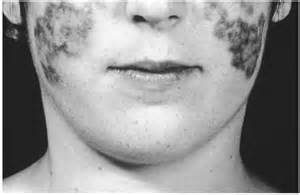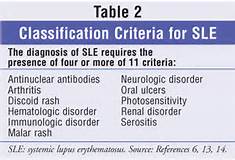Lupus is an inflammatory disease that is caused when the auto, meaning “self”, immune system attacks its own tissues.
Lupus is a chronic, an autoimmune disease that can damage any part of the body (skin, joints, and/or organs inside the body). Chronic means that the signs and symptoms tend to last longer than six weeks and often for many years.
In lupus, something goes wrong with your immune system, which is the part of the body that fights off viruses, bacteria, and germs (“foreign invaders,” like the flu). Normally our immune system produces proteins called antibodies that protect the body from these invaders. Your autoimmune immune system cannot tell the difference between these foreign invaders and your body’s healthy tissues and creates auto-antibodies that attack and destroy healthy tissue. These auto-antibodies cause inflammation, pain, and damage in various parts of the body.
Lupus is also a disease of remissions (flare ups) whereby the symptoms worsen and you feel ill and remissions (the symptoms improve and you feel better) but the disease remains. So your goal is to keep the disease as best as possible in remissions.
FACTS TO KNOW IF YOU HAVE LUPUS:
- Lupus is not contagious, not even through sexual contact. You cannot “catch” lupus from someone or “give” lupus to someone.
- Lupus is not like or related to cancer. Cancer is a condition of malignant, abnormal tissues that grow rapidly and spread into surrounding tissues. Lupus is an autoimmune disease, as described above. However, some treatments for lupus may include immunosuppressant drugs that are also used in chemotherapy.
- Lupus is not like or related to HIV (Human Immune Deficiency Virus) or AIDS (Acquired Immune Deficiency Syndrome) except that they both affect the immune system (but differently) in having remissions and exacerbations, that’s it. In HIV or AIDS the immune system is underactive; whereas in lupus, the immune system is overactive.
- Lupus can range from mild to life-threatening and should always be treated by a doctor. With good medical care, most people with lupus can lead a full life.
- Another factor in helping you reach remission is being compliant with the taking the meds ordered by your doctor.
- Research estimates that at least 1.5 million Americans have a form of lupus. The actual number may be higher; however, there have been no large-scale studies to show the actual number of people in the U.S. living with lupus.
- More than 16,000 new cases of lupus are reported annually across the country.
- It is believed that 5 million people throughout the world have a form of lupus.
- Lupus strikes mostly women of childbearing age (15-44). However, men, children, and teenagers develop lupus, too. Most people with lupus develop the disease between the ages of 15-44.
- Women of color are two to three times more likely to develop lupus than Caucasians.
- People of all races and ethnic groups can develop lupus.
- Lupus effects 80% women.
- Discoid lupus erythematosus—causes a skin rash that doesn’t go away
- Subacute cutaneous lupus erythematosus—causes skin sores on parts of the body exposed to sun
- Drug-induced lupus—can be caused by medications
- Neonatal lupus—a rare type of lupus that affects newborns.
- Approximately 1.5 million Americans have a form of lupus.
- Systemic lupus erythematosus cases: 70% of total lupus cases.
- Of individuals diagnosed with lupus, 90% are women.
- Eighty percent of people develop lupus between 15 and 45 years of age.
- Lupus is two to three times more prevalent among people of color.
- Chance of a parent or sibling having or developing lupus: 20%
There are 4 major kinds of lupus. Here are the types:
1-Systemic lupus erythematosus (SLE) is the most common and most serious type of lupus.
2-Cutaneous lupus erythematosus, which affects only the skin.
3-Drug-induced lupus, a short-term type of lupus caused by certain medicines.
4-Neonatal lupus, a rare type of lupus that affects newborn babies.
The most common type and serious type of lupus is systemic lupus erythematosus (SLE)
- Systemic Lupus Erythematosus or also known as (SLE):
- The cause(s) of SLE are unknown, however, heredity, viruses, ultraviolet light, and drugs all may play some role.
Signs and Symptoms of Lupus:
1. *butterfly rash on the face – very common symptom with a flare up.
Including other possible symptoms:
2. appetite loss 3. hair loss 4. fever 5. fatigue 6. photosensitivity 7. Raynaud’s phenomenon 8. pleuritis and 9. pericarditis.
- Up to 10% of people with lupus isolated to the skin will develop the systemic form of lupus (SLE).
- The criteria listed at the top in the picture help doctors diagnose SLE!
Stayed tune for part II tomorrow on how its diagnosed and the type of treatments!

